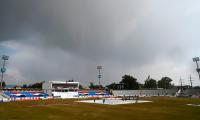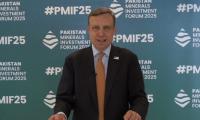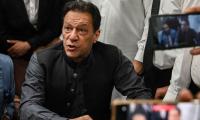Prime Minister Imran Khan’s refusal to announce a wholesale lockdown to slow the spread of the Covid-19 virus is rooted in compassion. For this, his sentiment must be appreciated, not mocked. It is rare for leaders to be able to hold firm to their convictions, but perhaps what separates good leaders from great ones is to be able find a way past a policy impasse, with creativity and swiftness.
The problem is that the line between being firm and truthful to one’s convictions and being obdurate and incapable of flexibility is a thin one. PM Khan’s insistence on formulating policy that puts the bottom two income quintiles in the country at the top of his priority list is wonderful. However, this insistence may cause a quantum of economic, social and governance damage that has a disproportionate and catastrophic impact on those very Pakistanis down the road.
The most urgent task facing Pakistan’s leadership, including Dr Zafar Mirza, Dr Sania Nishtar, and Dr Moeed Yousuf, is to offer policy solutions to the Covid-19 crisis that achieve three policy goals simultaneously. First, to effectively restrict the transmission of the Covid-19 virus through social interactions. Second, to ensure that the poorest quintile of Pakistanis (those twenty percent of Pakistanis with the lowest income in the country) are provided with income support and essential services. Third, to prevent the collapse of any existing public service provision system – health, education, water supply.
The most important thing to remember in this triple-outcome framework is the self-reinforcing nature of these three outcomes. The best way to prevent the exponential growth in number of infections is by far the best way to keep public service provision alive and above water. And the best way to ensure that exponential growth does not occur is to ensure that those most in need of mobility and interactions are not forced to be mobile and spread infections, but instead are confident and assured that they will be taken care of. The starting point for achieving these outcomes then, given PM Khan’s noble insistence on caring for those most economically vulnerable is to manufacture a policy solution that addresses their economic vulnerability.
Income support for the bottom quintile is challenging for two overarching reasons: one, finding those deserving of the income support; and the second, paying for it.
Finding and verifying who is (and who is not) a deserving candidate for support is a complex and politically challenging task. So much of the recent discourse around the Benazir Income Support Programme has been about falsified notions of who is or is not deserving. That debate doesn’t just disappear because of Covid-19, it colours it deeply.
Paying for it, conceptually, is a lot simpler: meaningful and impactful income support will not be cheap. The bottom quintile or 20 percent means roughly 42 million Pakistanis. The average household size in the bottom quintile is 8.06. This means that there are roughly 5.2 million households (and heads of household) in the bottom quintile. If we expand our intended income support design to include the bottom two quintiles (and as you will see below, we absolutely should), then the task is harder. There are roughly 84 million Pakistanis in the bottom two quintiles. The average household size in the second quintile is 7.21. This means that another 5.8 million households get added to our target income group, for a total of 11 million households.
The average household income in the bottom quintile in the most recent Household Income and Expenditure Survey (HIES) (which was 2015-2016) is Rs19,742. The average household income in the next quintile is hardly much better, at Rs23,826. On average, if you are among the 84 million Pakistanis that live in households with an average income amongst the bottom 40 percent in the country, you live in households with an average income per month of just under Rs22,000. Now remember, this is 2015-2016 data. Incomes have increased across the board since then, but since this is a crisis and we want to come up with numbers that are conservative and bare bones, let’s work with the household income level of Rs22,000. How do they spend this money?
Approximately half of all income for the bottom forty percent is spent on food (about 48 percent for the first quintile and 43 percent for the second). This is in stark contrast to less than 30 percent of all income for the top or fifth quintile. Half of Rs22,000 equals about Rs11,000. If we add inflation since 2015-2016, this figure should be closer to Rs15,000 per month per household, as an absolute minimum to stave off a major hunger crisis during any purported lockdown. At about 11 million households needing about Rs15,000, the total monthly cost of a minimalist income support instrument is at least Rs165 billion. That is a lot of money. Every month. To parse this into digestible numbers, perhaps we can start with 10 percent slabs within the bottom 40 percent. An income support instrument to any one segment of 10 percent amongst the poorest Pakistanis will cost roughly Rs41 billion. That too is a massive bill. But suddenly it seems within reason to allocate that kind of money. Why?
Because last week the World Bank and ADB offered immediate support to the Government of Pakistan in light of Covid-19 amounting to $600 million, or roughly Rs90 billion. The second question, of how to pay for an income support instrument, thus stands answered: use around half the World Bank and ADB money to make direct payments to 10 percent of all Pakistanis.
Now, the harder question is how to find them. There is no perfect answer and no answer that will tick all the boxes. But one quarter of the bottom 40 percent equals roughly 2.75 million households. The BISP programme has roughly five million households that receive BISP payments. The easiest and quickest instrument of delivery is BISP. Simply targeting the 2.75 million households with the lowest incomes within BISP is the fastest and quickest way of getting Rs11,000 into the pockets of the poorest Pakistanis. It won’t be perfect. Middlemen, quacks, hacks and hucksters will steal money in ways and means unimaginable – but BISP continues to be the most certain and least problematic tool to transfer wealth from rich to poor in Pakistan.
As soon as this payment is made, the capacity of the state to enforce a lockdown will be underpinned by the moral rectitude of caring for our most economically vulnerable. This in turn will reduce the sudden surge of patients descending upon already dilapidated and dysfunctional public health facilities. Our doctors, nurses, administrators, cops and soldiers will all do amazing work in this crisis – they always do. But public policy has to buy time for the system to be able to flatten the curve enough to survive the worst spike in cases of Covid-19.
Who will pay for the income support next month? We are in an unprecedented crisis. The IMF and a host of international institutions are going make credit available in a manner unprecedented. And if Pakistan is demonstrating the kind of compassion PM Khan insists on, inshaAllah there is no negotiation on the planet Pakistan will not succeed in, to secure further support.
PM Khan must act now – Rs15,000 each for the bottom 2.75 million households in the BISP database. The system can improve targeting and grant sizes next month. And improve them again, the month after that. As the WHO has repeatedly said, in a crisis, acting fast is more important than getting the policy perfect.
Act now, PM Khan. Issue the income support. And then lock down the country. Allah Hu Akbar.
The writer is an analyst and commentator.
Those who wield technology not only change their destiny but alter very definitions of power
Pakistan should, in the long run, aim for geographical diversification for its products to mitigate external shocks
Pakistan must first therefore undertake complete overhaul of its educational landscape
Regardless, climate crisis is a global pandemonium and unfortunately, it is excruciating
Once products are manufactured and ready for distribution, transportation further contributes to environmental harm
Effective foreign exchange regulation can also help prevent currency manipulation and illicit financial activities







